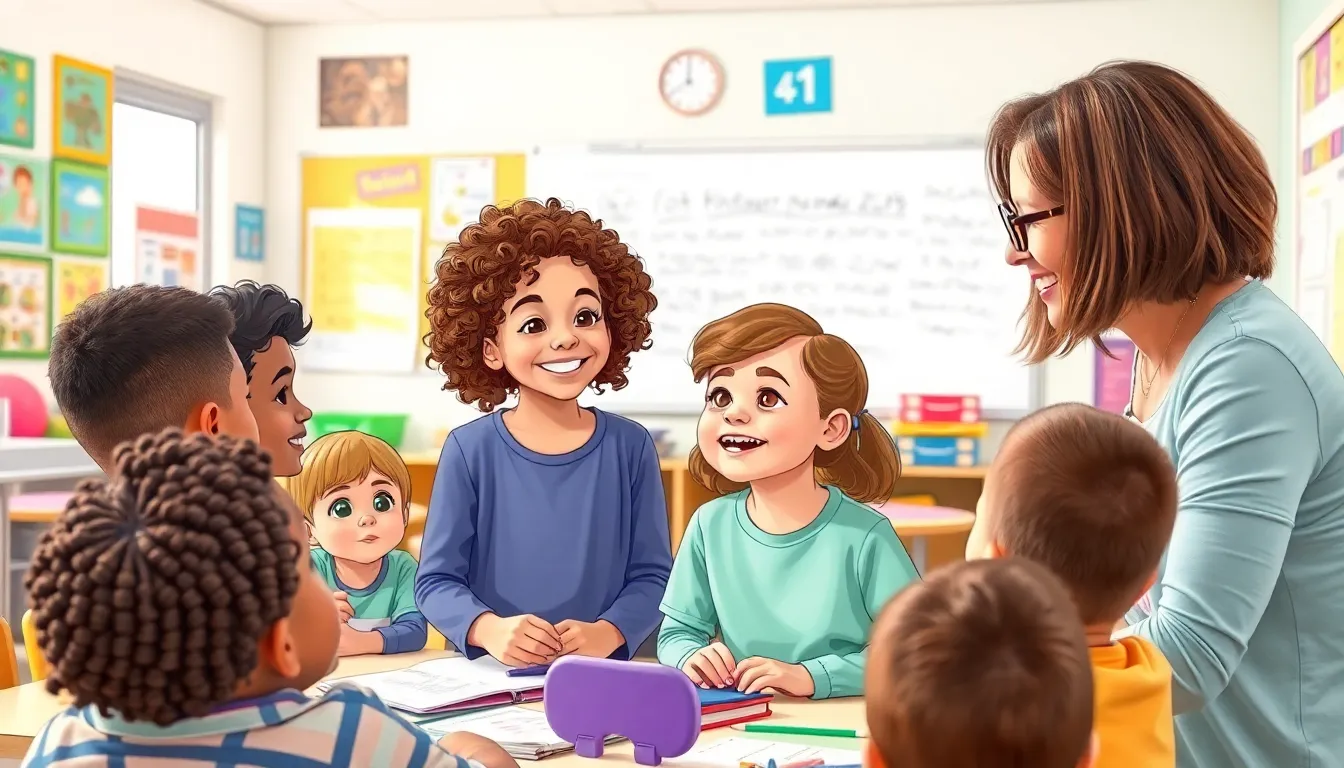Navigating the world of special education can feel like trying to solve a Rubik’s Cube blindfolded. When it comes to Emotional and Behavioral Disorders (EBD), the challenge intensifies. EBD isn’t just a label; it’s a complex landscape that requires understanding, patience, and a sprinkle of humor. After all, who doesn’t need a good laugh when tackling serious issues?
EBD Special Education
EBD encompasses a range of emotional and behavioral challenges that can impact a child’s learning. Recognition of EBD as a unique category within special education highlights its complexity.
Definition of EBD
EBD refers to conditions that significantly interfere with a student’s emotional stability and behavioral functioning. Students exhibiting EBD may struggle with social interactions, decision-making, and emotional regulation. These challenges often manifest in disruptive behaviors, anxiety, or depression. According to the Individuals with Disabilities Education Act (IDEA), EBD qualifies as a disability, demanding special educational services for affected students.
Importance of EBD Special Education
EBD special education plays a crucial role in addressing specific needs of affected students. Tailored educational strategies can foster emotional growth while improving academic performance. Individualized support programs create structured environments that enhance learning and social interactions. These targeted interventions help foster resilience and coping strategies among students. Ultimately, prioritizing EBD special education ensures equitable access to educational opportunities for all learners.
Characteristics of EBD

Emotional and Behavioral Disorders (EBD) exhibit specific characteristics that significantly impact a child’s educational experience. Understanding these characteristics helps in tailoring effective strategies for support.
Emotional Symptoms
Emotional symptoms often manifest as anxiety or depression in students with EBD. Frequent mood swings create unpredictable emotional backgrounds, hindering stable relationships with peers and teachers. Difficulties in expressing feelings can lead to frustration and withdrawal from social interactions. Feelings of hopelessness or low self-esteem contribute to challenges in academic performance. These emotional challenges not only affect academic achievement but also impede social engagement and peer connections.
Behavioral Symptoms
Behavioral symptoms frequently include aggression or opposition towards authority figures. Impulsive behaviors disrupt classroom environments, making learning difficult for the individual and their peers. Students may exhibit defiance during routine activities, impacting their ability to follow directions. Frequent outbursts or tantrums indicate challenges in managing emotions, leading to suspensions or expulsions. Students with EBD often struggle with issues such as noncompliance, which creates additional barriers to their learning journey.
Strategies for Educators
Effective strategies are essential for addressing the needs of students with Emotional and Behavioral Disorders (EBD). Utilizing tailored approaches fosters a conducive learning environment.
Creating a Supportive Environment
Creating a supportive environment enhances emotional stability. Establishing clear routines offers predictability, which helps students feel secure. Positive reinforcement encourages desired behaviors, improving student interactions. Providing sensory breaks equips students with tools to manage overwhelming feelings. Fostering open communication allows students to express their emotions freely, promoting trust between educators and learners.
Implementing Individualized Education Plans (IEPs)
Implementing Individualized Education Plans (IEPs) ensures personalized support. Collaborating with parents, teachers, and specialists creates a comprehensive team approach. Setting specific, measurable goals keeps students focused on achievable outcomes. Regular monitoring of progress informs necessary adjustments, allowing educators to respond effectively. Tailoring instruction based on individual strengths and needs supports academic growth and fosters independence.
Parents’ Role in EBD Special Education
Parents play a pivotal role in the education of children with Emotional and Behavioral Disorders (EBD). Their involvement contributes to developing effective strategies tailored to individual needs.
Communication with Educators
Open communication enhances collaboration between parents and educators. Regular meetings, emails, or phone calls keep everyone informed of a child’s progress and challenges. Parents should share insights about their child’s behavior at home, providing valuable context for educators. Understanding these experiences fosters a unified approach that can lead to better outcomes. Active participation in IEP meetings ensures parents’ voices are included in decision-making. Ensuring clarity in communication fosters trust and helps identify effective interventions.
Supporting Emotional Well-being at Home
Maintaining emotional well-being at home significantly influences a child’s daily functioning. Establishing routines offers a sense of stability, helping children feel secure. Encouraging self-expression, whether through art or conversation, allows children to communicate feelings. Providing opportunities for physical activity helps release pent-up energy and reduces anxiety levels. Setting aside time for nurturing relationships strengthens emotional connections with family members. Creating a calm and positive environment promotes relaxation and aids in emotional regulation. Parents can also model coping strategies, demonstrating how to handle emotions constructively.
Current Trends in EBD Special Education
Current trends indicate a focus on innovative practices and technologies that enhance experiences for students with Emotional and Behavioral Disorders (EBD). These approaches aim to address their unique challenges effectively.
Inclusion Practices
Inclusive practices foster a sense of belonging for students with EBD. Educators implement co-teaching models, integrating general and special education to support diverse learning needs. Peer support programs also promote social interactions, allowing students to build relationships while learning. Administrators often prioritize training for staff on empathy, behavior management, and inclusive strategies. Comprehensive professional development enhances teacher confidence and skills, improving outcomes for students with EBD.
Technological Innovations
Technological innovations play a pivotal role in EBD special education. Interactive applications assist students in managing emotions, promoting self-regulation through engaging strategies. Virtual reality experiences allow for social skills training in safe environments. Additionally, data tracking systems enable educators to monitor progress and tailor interventions effectively. Access to online resources creates opportunities for students to engage in personalized learning, enhancing academic achievement and emotional well-being.
Conclusion
Supporting students with Emotional and Behavioral Disorders requires a comprehensive approach that combines understanding and tailored strategies. By fostering collaboration among educators and parents, it’s possible to create an environment that promotes emotional growth and academic success. The integration of innovative practices and technology further enhances the educational experience for these students.
As the landscape of EBD special education evolves, ongoing commitment to empathy and inclusivity remains essential. With the right support systems in place, students can thrive both academically and socially, paving the way for a brighter future.





